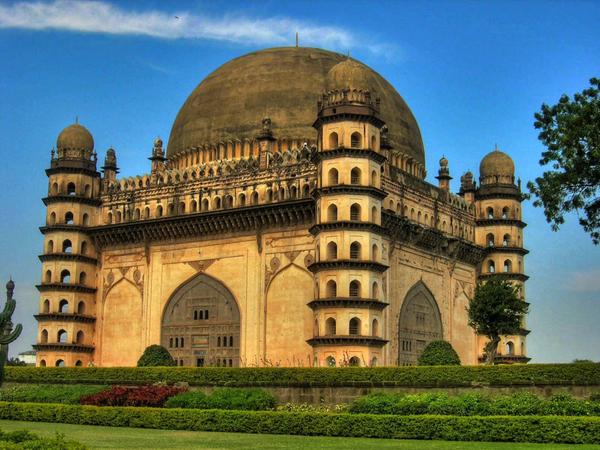Vijayapur city, formerly Bijapur,[1] is the district headquarters of Bijapur District of Karnataka state. It is also the headquarters for Bijapur Taluka. Bijapur city is well known for its historical monuments of architectural importance built during the rule of the Adil Shahi dynasty. Bijapur is located 530 km northwest of Bangalore and about 550 km from Mumbai, and 384 km west of the city of Hyderabad.
Bijapur urban population as per 2011 census is 326,000, perhaps the 9th biggest city in Karnataka. Vijayapura Mahanagara Palike(VMP) is the newest Municipal Corporation formed under the KMC act along with Shivamogga andTumakuru Municipal Corporations. The other existing city corporations in Karnataka state in descending order of population are Bengaluru, Hubballi-Dharawada, Mysuru, Kalaburgi, Belagavi, Mangaluru, Davangere and Ballari. Administratively, Bijapur district comes under Belgaum division along with Bagalkote, Belgaum, Dharwad, Gadag,Haveri and Uttara Kannada (Karwar) districts.
Bijapur, the land of five rivers and the domain of different cultures, is an ancient city. The city established in the 10th and 11th centuries by the Chalukyas of Kalyani was known as Vijayapura (City of victory). Bijapur was the biggest district place of the state with 11 taluks, but after forming bagalokote new district in 1997 Now it consists of five taluks viz. Basavan Bagevadi, Bijapur, Indi, Muddebihal and Sindagi.
The city was established in the 10th-11th centuries by the Kalyani Chalukyas and was known as Vijayapura (City of victory). The city was passed to Yadavas after Chalukya's demise. The city came under the influence of the KhiljiSultanate in Delhi by the late 13th century. In 1347, the area was conquered by the Bahmani Sultanate of Gulbarga. By this time, the city was being referred as Bijapur.
Beejpur literally means replete with seeds meaning Pomegranate, Beejpur is a Hindi word.









